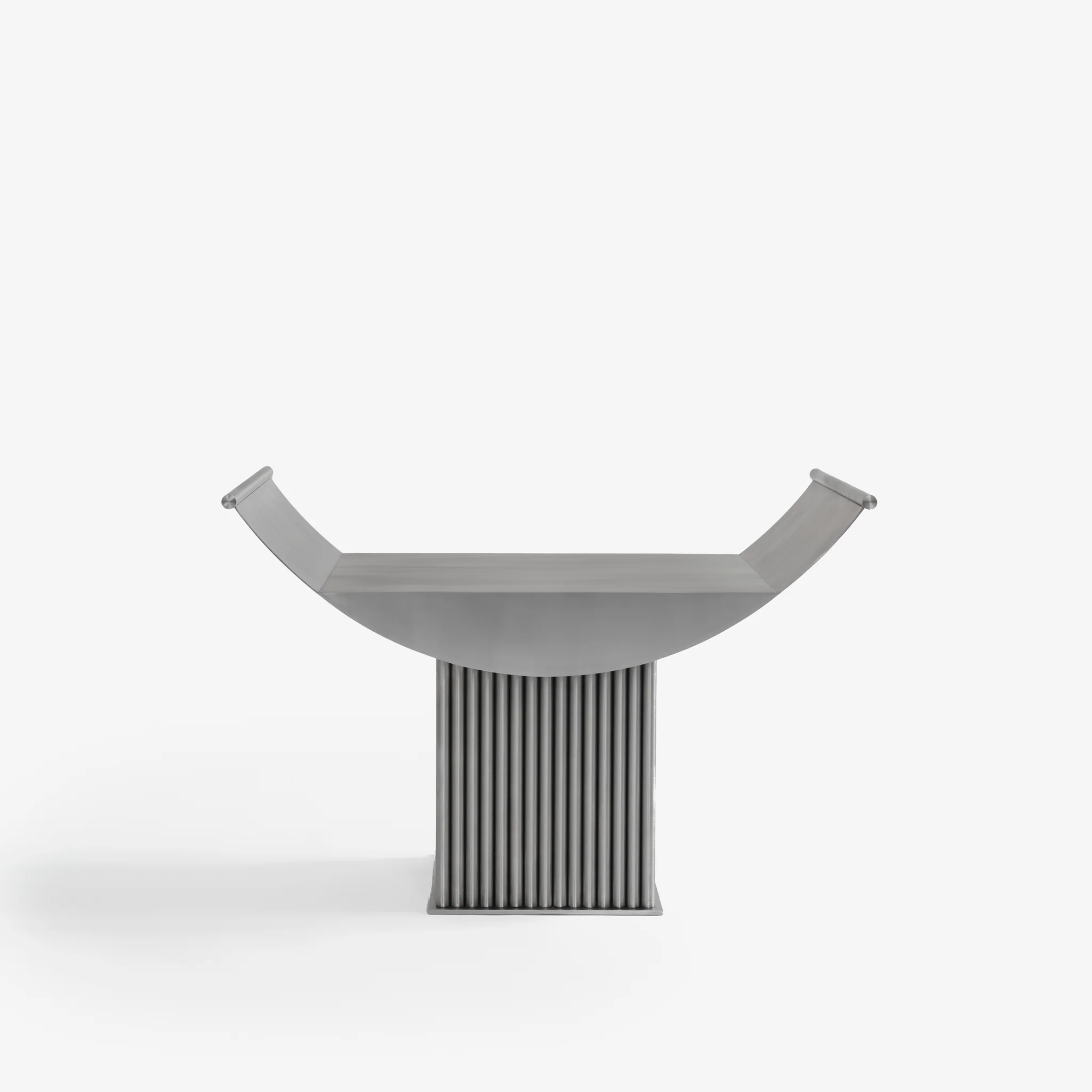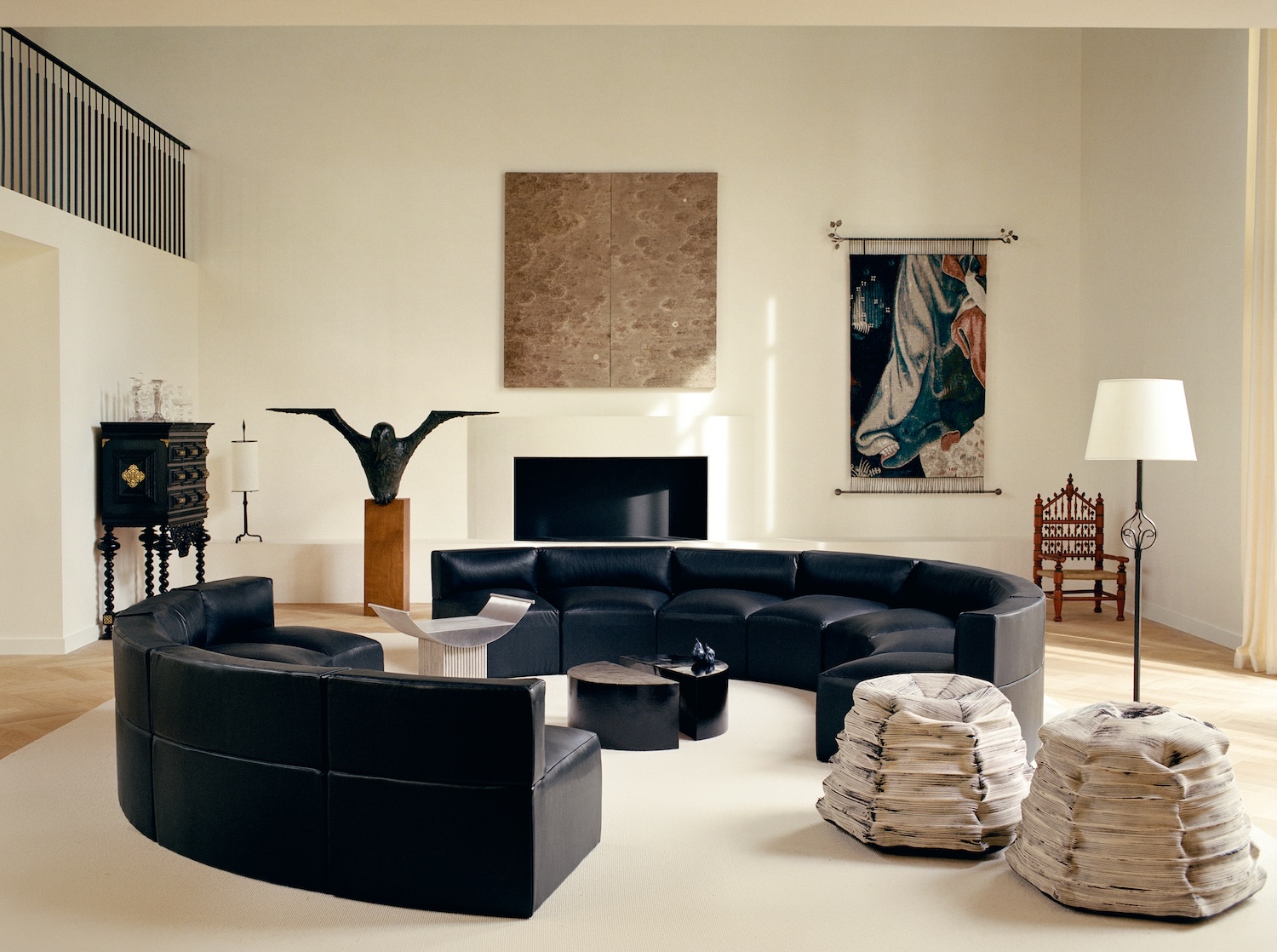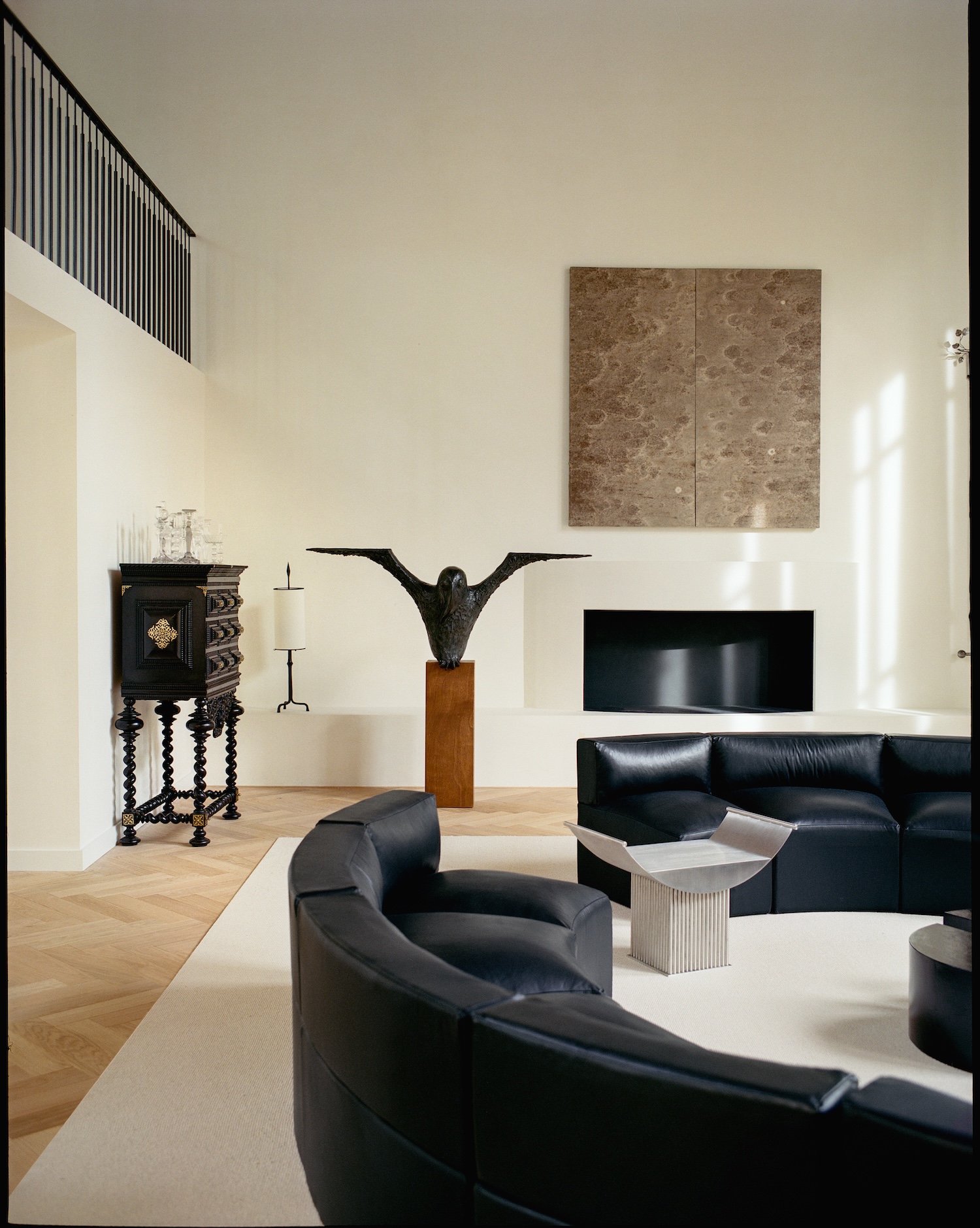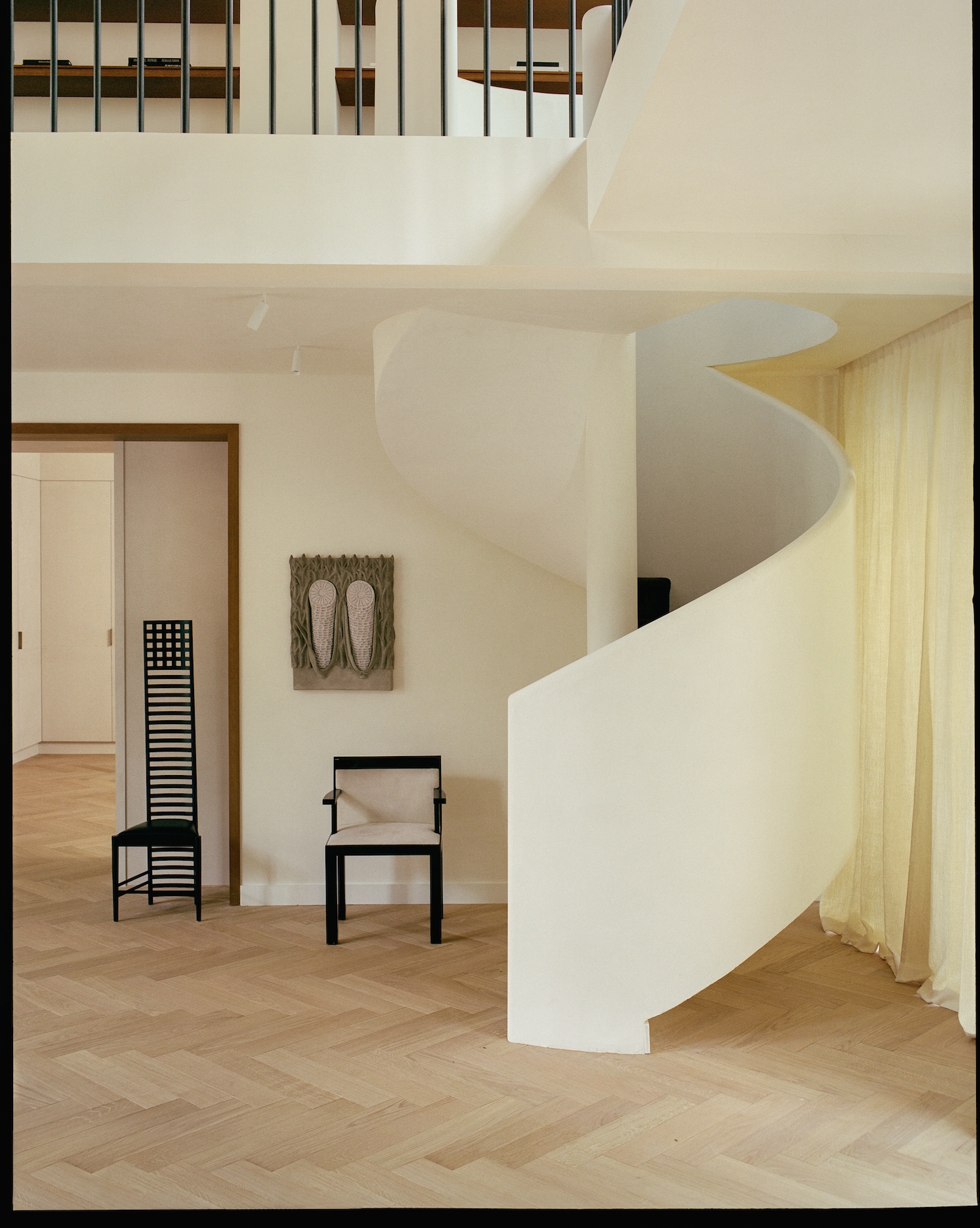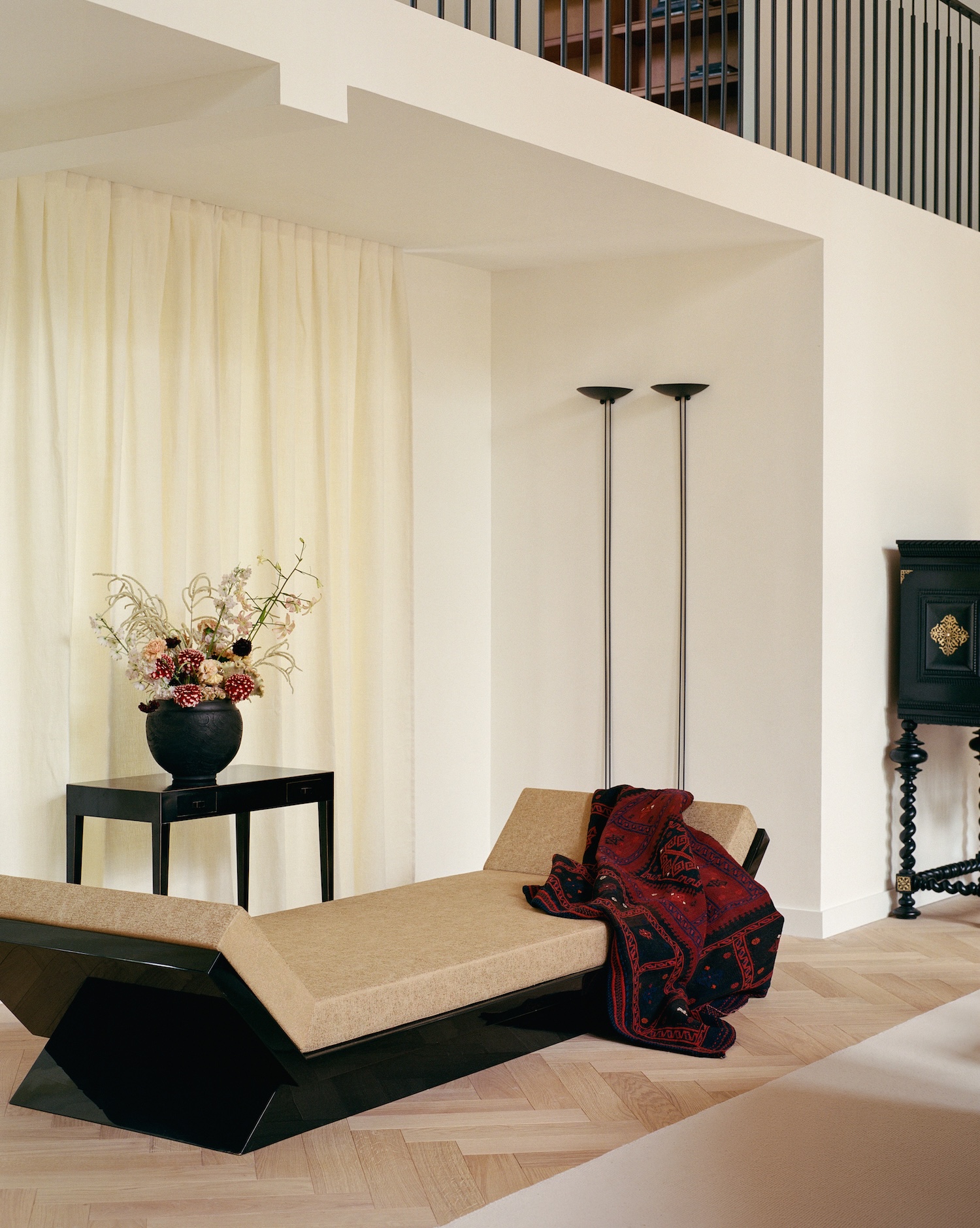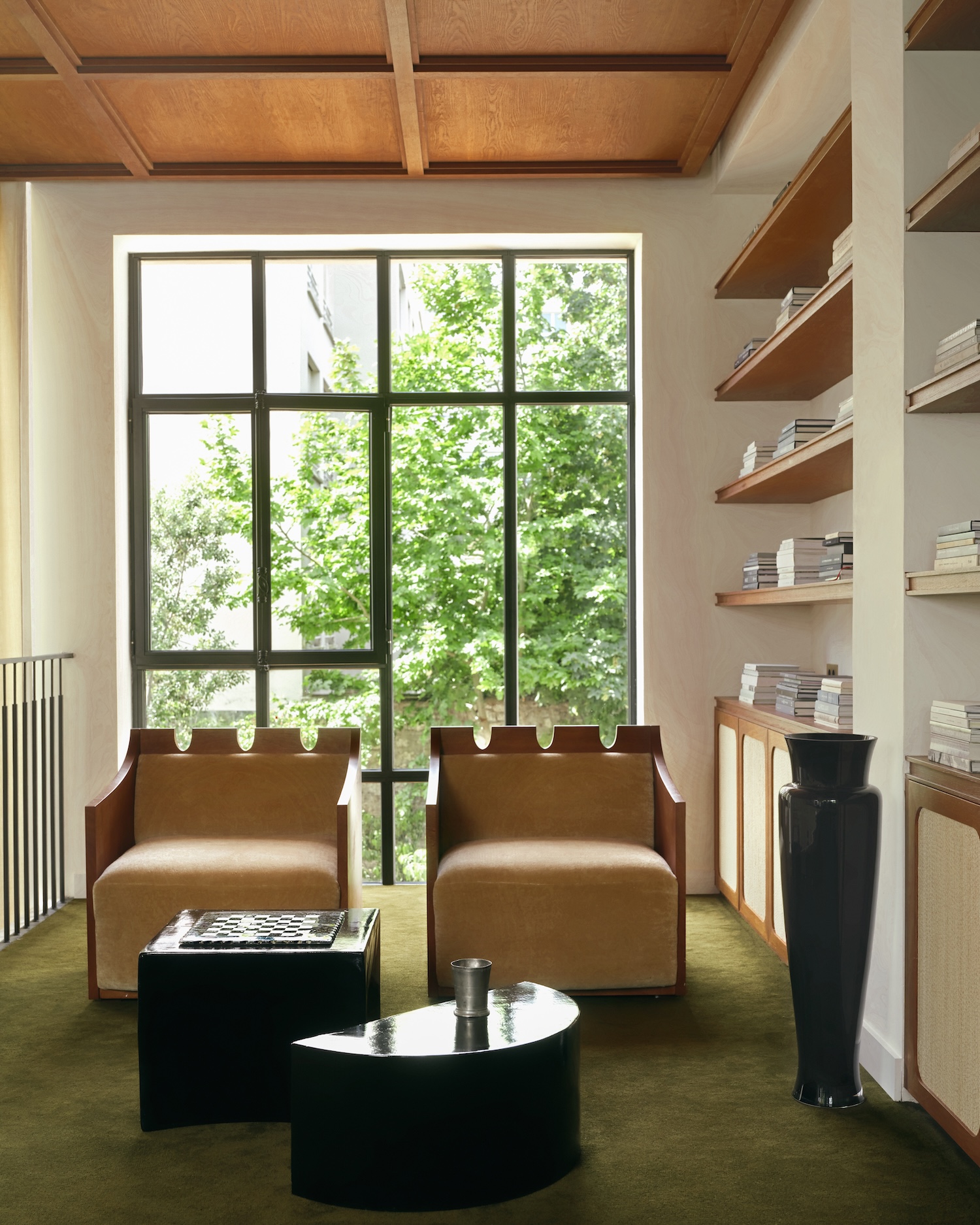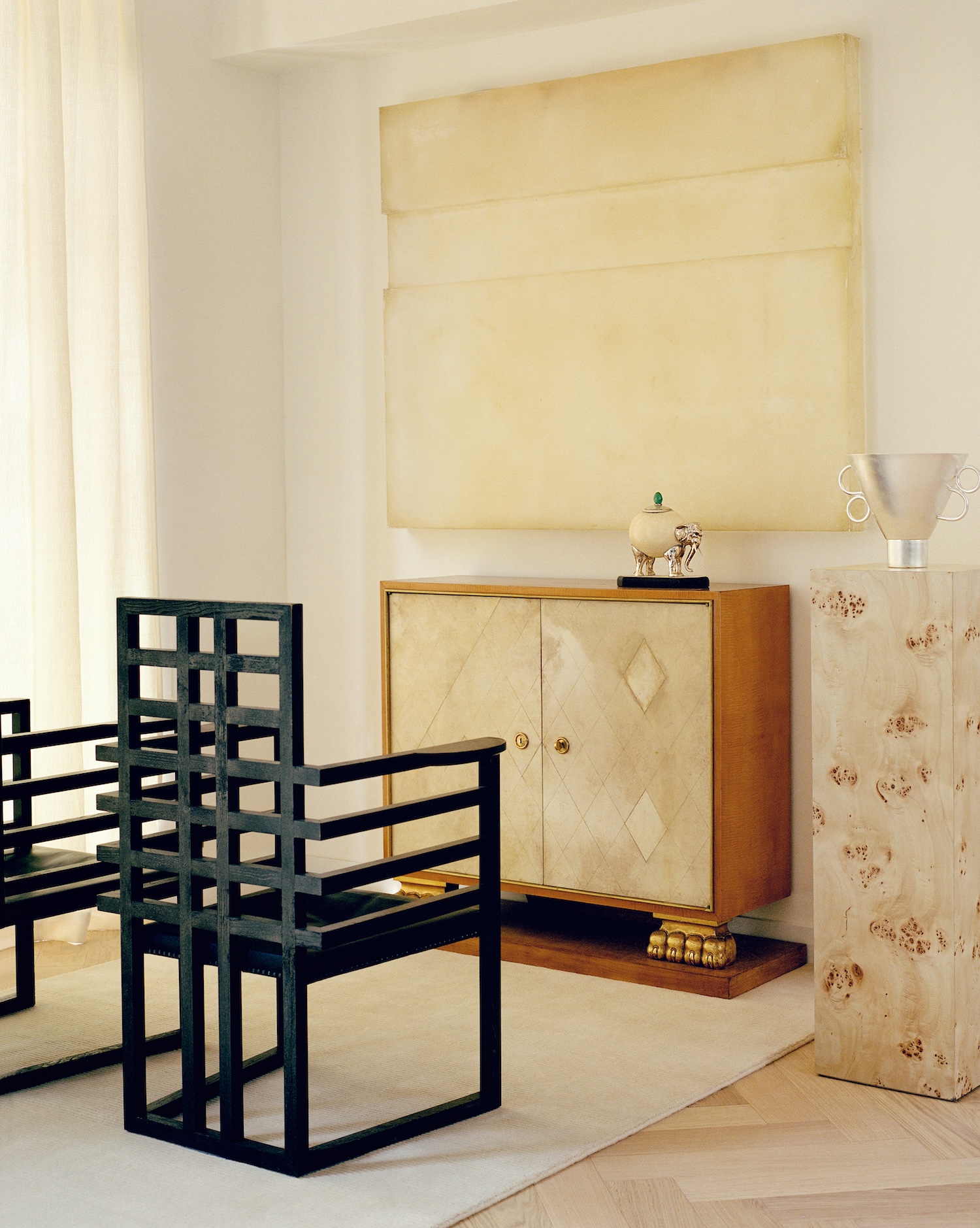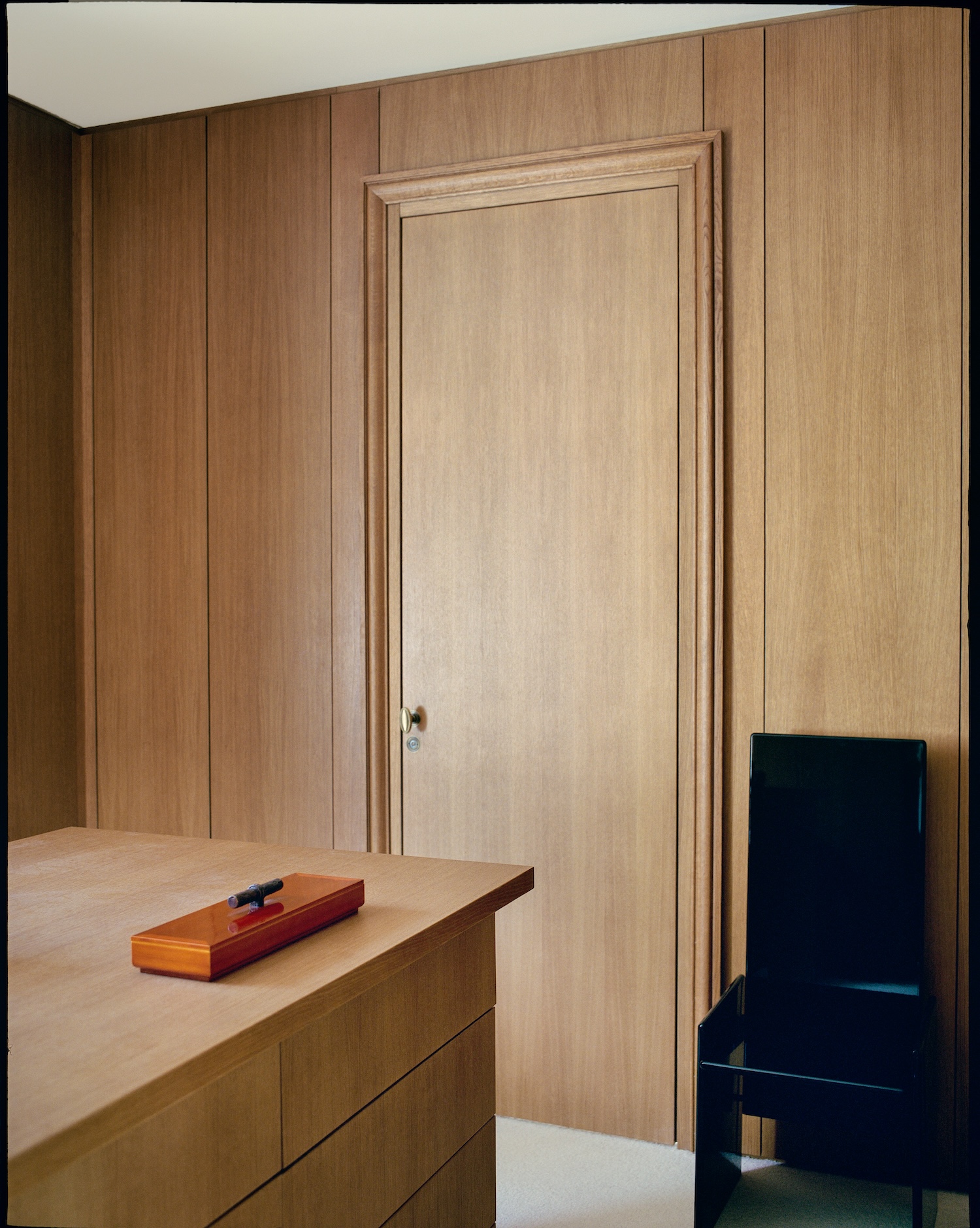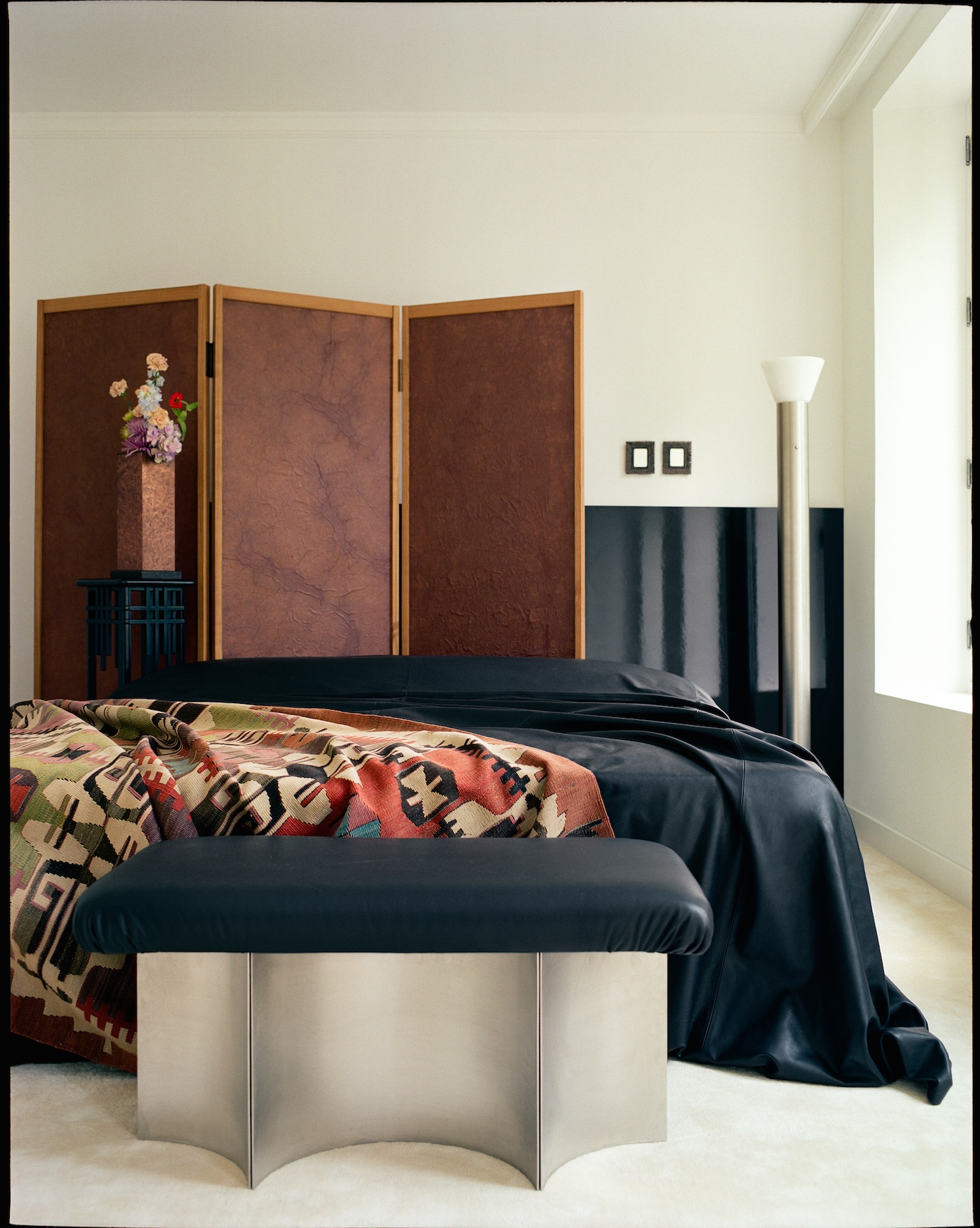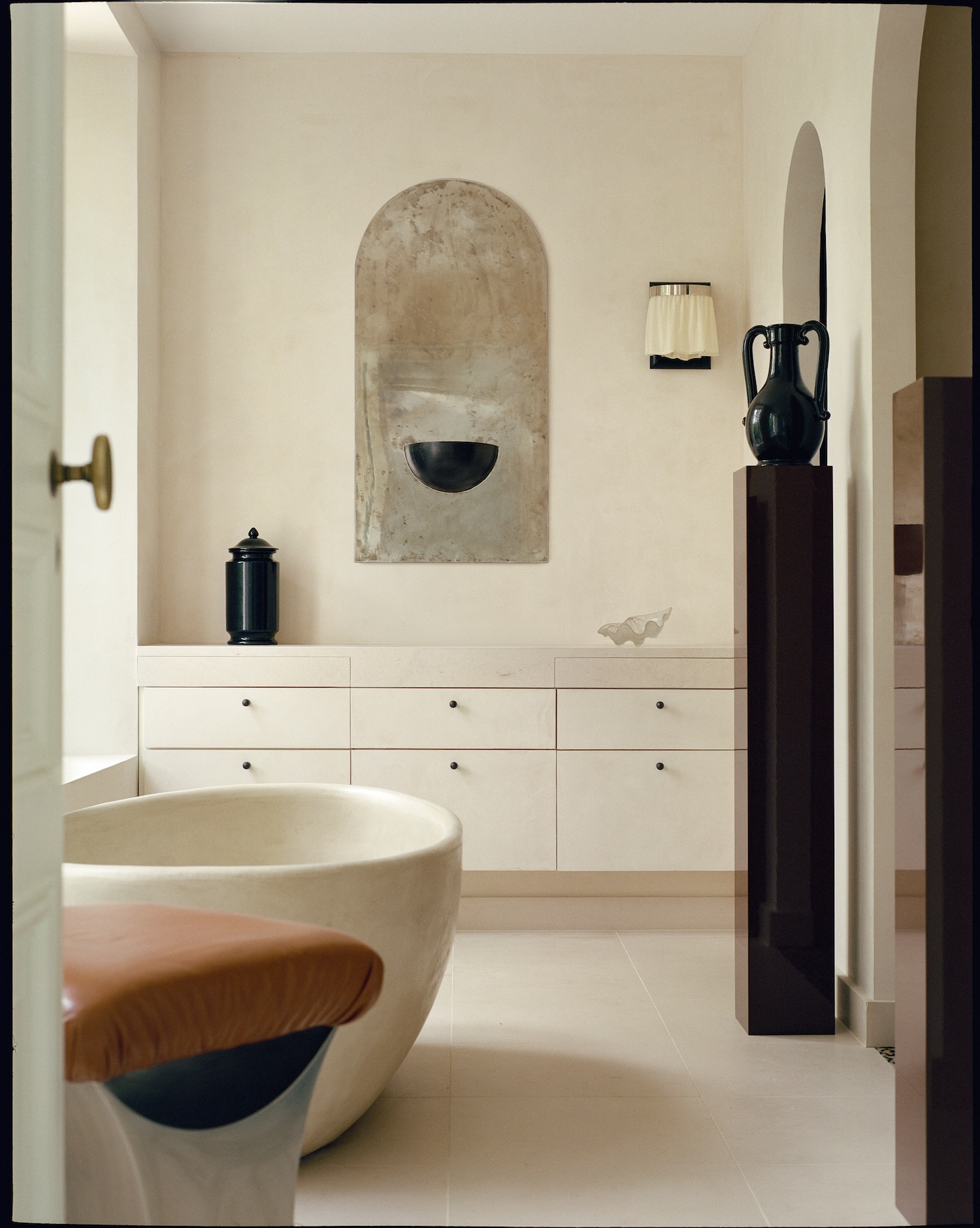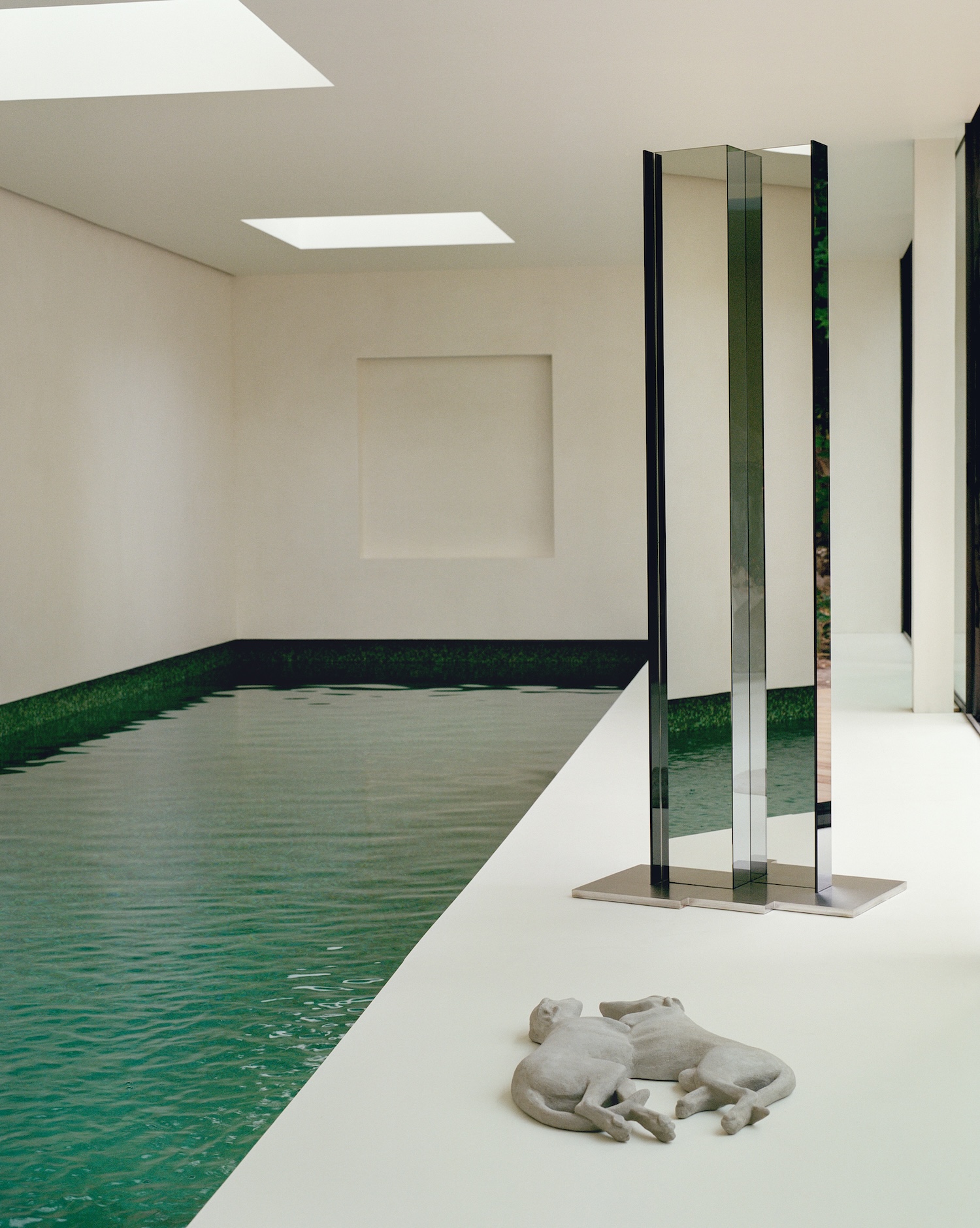Villa N is a minimal home located in Paris, France, designed by Katja Pargger. A single beam of light cuts through the foliage, illuminating a conversation pit wrapped in reclaimed Hermès leather – perhaps the perfect metaphor for Katja Pargger’s masterful renovation of this Parisian residence. Here, in this thoughtfully curated space where a pointillist painter once worked, we find a compelling meditation on the dialogue between architectural rigor and material poetry.
The project’s genesis lies in a moment of discovery: Pargger encountering an overgrown garden so dense it obscured the classical building within. Rather than fighting this natural abundance, she made it central to her architectural thesis, creating what she calls a play of “revealing without showing too much.” This approach reflects a sophisticated understanding of Japanese spatial concepts, particularly the principle of miegakure (hide and reveal), while simultaneously drawing on the Modernist transparency championed by Le Corbusier and Mallet-Stevens.
What distinguishes Pargger’s work is her material literacy. The façade’s marble-flecked white finish isn’t merely decorative – it’s a conscious revival of historical craftsmanship that positions the building within a continuum of architectural practice. Inside, her material choices create a rich temporal dialogue: mineral-coated walls converse with natural oak herringbone flooring, while a sculptural plaster-clad staircase appears to float in space. These elements echo Josef Hoffmann’s Vienna Secession principles of gesamtkunstwerk (total artwork), yet feel thoroughly contemporary in their execution.
The sofa emerges as a particularly compelling artifact. More than just seating, this conversation pit represents a masterclass in material reclamation and social engineering. The use of Hermès leather offcuts transforms luxury industry waste into a gathering point that encourages connection – a clever subversion of both environmental and social conventions.

